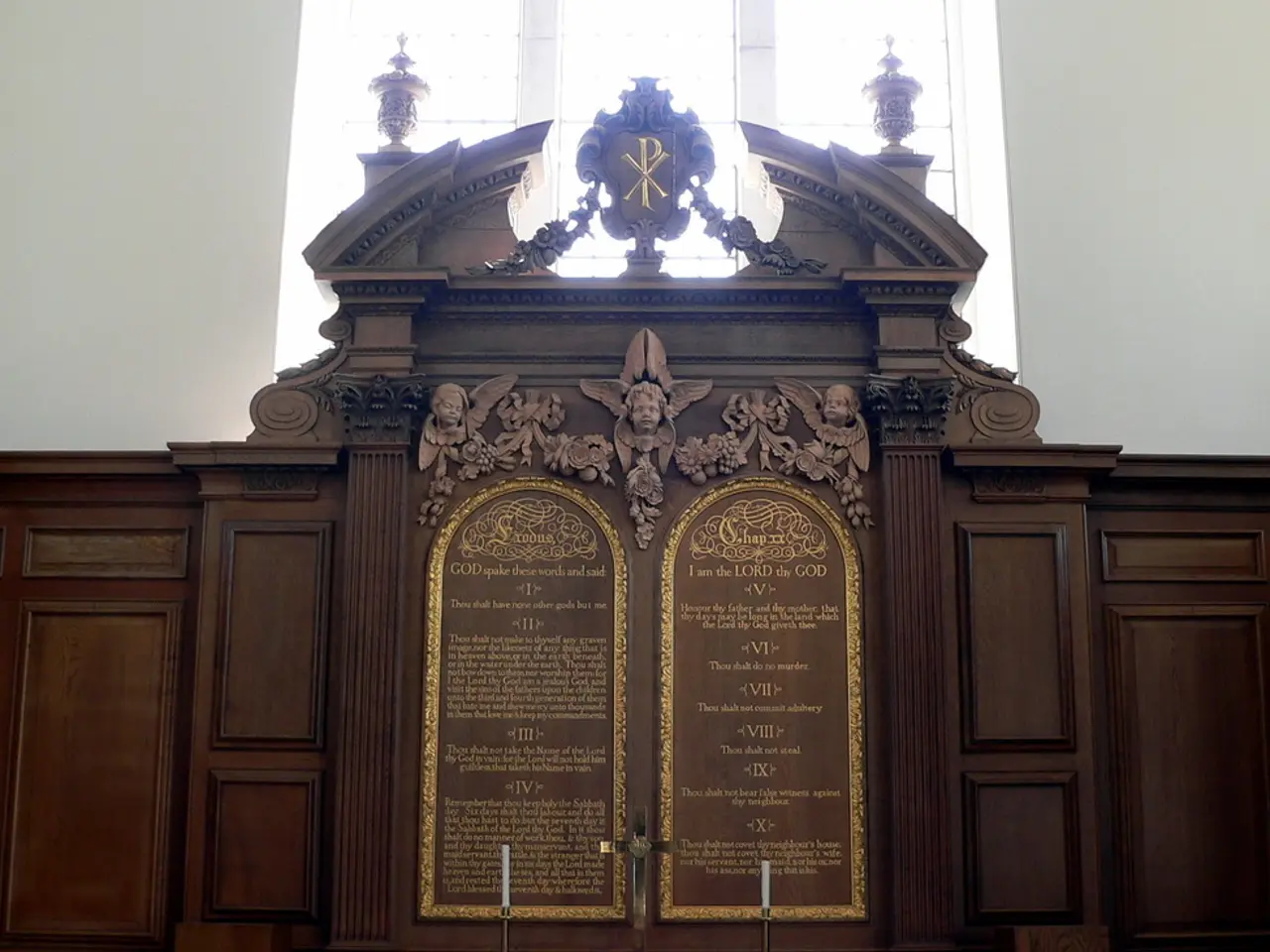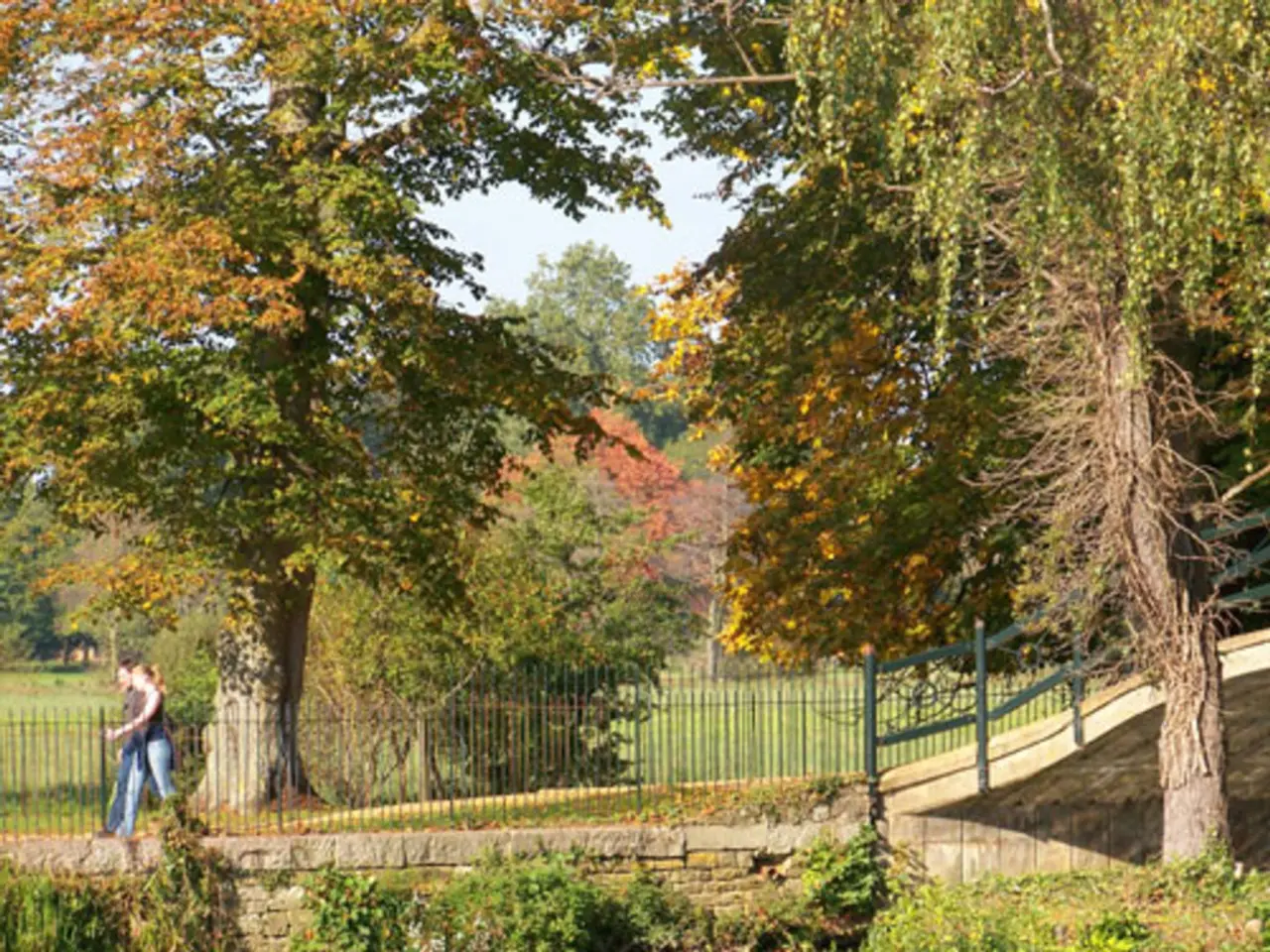Legends and History: The Hermann Statue Explored
Article Title: The Hermann Monument: A Symbol of Germanic Resistance and European History
In the heart of the Teutoburg Forest, near Detmold, Germany, stands a towering testament to ancient history – the Hermann Monument (Hermannsdenkmal). This national monument, commemorating the Battle of the Teutoburg Forest in 9 AD, has been a significant historical landmark and a popular tourist destination for over a century.
Ernst von Bandel, a renowned sculptor, created the monument between 1838 and 1875, with the statue standing approximately 26 meters high and the monument reaching around 53 meters in total, making it one of Europe's largest monuments. The monument is situated in the Teutoburg Forest, a region believed to be the general area where the critical battle took place, marking a turning point in Roman expansion into Germania east of the Rhine.
The Battle of the Teutoburg Forest, led by the Cheruscan prince Arminius (also known as Hermann), saw the Germanic tribes reclaiming their freedom from Roman imperialism. This victory symbolizes the monument, becoming an emblem of national unity and German patriotism, particularly influential during Germany's efforts at political consolidation in the 19th century.
However, contrary to popular belief, the monument was not instrumentalized as a symbol for the Nazis during World War II. Instead, it remained a regional symbol, untouched by the nationalistic ideology of the time. Interestingly, a little brother of the Hermann Monument stands in Minnesota, USA, having been inaugurated by German immigrants in 1897.
In recent years, the monument has faced challenges. In 2021, the Bandel hut, a building of special cultural-historical value for Lippe, was destroyed by fire. Fortunately, the monument itself remains intact, standing as a reminder of the Germanic resistance against Roman imperialism and preserving the memory of a key ancient battle in European history.
More recently, a new visitor center called Hermanneum was inaugurated near the monument in North Rhine-Westphalia in 2024, offering visitors an immersive experience into the history and significance of the Hermann Monument.
Despite a few misconceptions, such as Andreas Pinkwart's incorrect statement that Hermann is looking towards France, the monument's gaze is actually directed towards the Lippe region, where the Romans fled after the battle. The Lippe people have always been proud of their independence, and Hermann, according to a tour guide, is looking more towards Düsseldorf as a warning, symbolizing the importance of maintaining freedom and independence.
The Hermann Monument, with its rich history and enduring significance, continues to stand as a testament to the spirit of resistance and the importance of preserving historical landmarks for future generations.
The Hermann Monument's historical significance extends beyond its role as a symbol of Germanic resistance, serving as a constant reminder in the realm of entertainment and pop-culture, inspiring numerous films, books, and artistic depictions that revisit the story of Arminius and the Battle of the Teutoburg Forest.
In the realm of pop-culture, the Hermann Monument's image often appears in various mediums, illustrating a lasting influence that transcends its physical location, serving as a symbol of European history that above all, represents the triumph of freedom over oppression.








